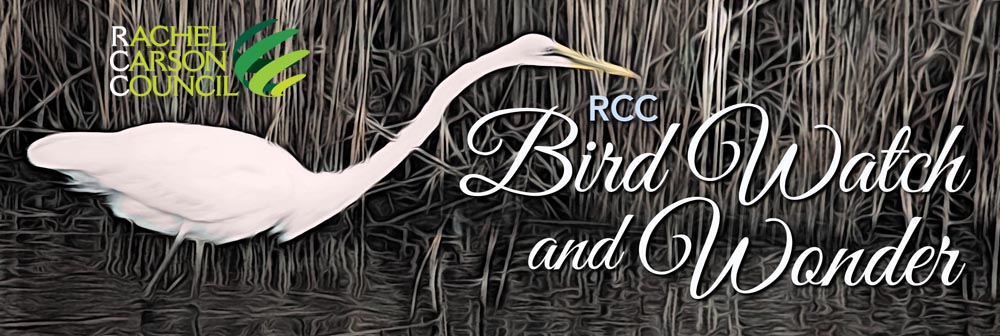 | | | 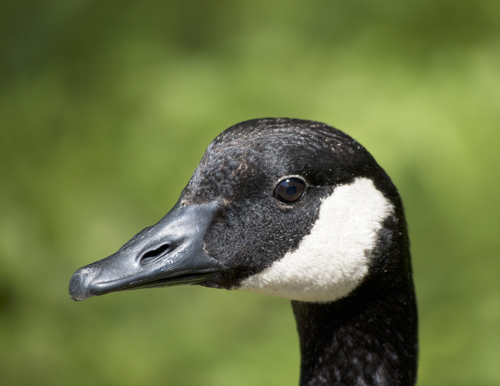 Our February issue of RCC’s Bird Watch and Wonder might as well be called “Love and Obstacles,” the title of the touching story from our master of bird lore, Ross Feldner, who “tails” a Canada Goose who cannot fly as it honks and hobbles its way to a loving reunion with its mate. Our February issue of RCC’s Bird Watch and Wonder might as well be called “Love and Obstacles,” the title of the touching story from our master of bird lore, Ross Feldner, who “tails” a Canada Goose who cannot fly as it honks and hobbles its way to a loving reunion with its mate.
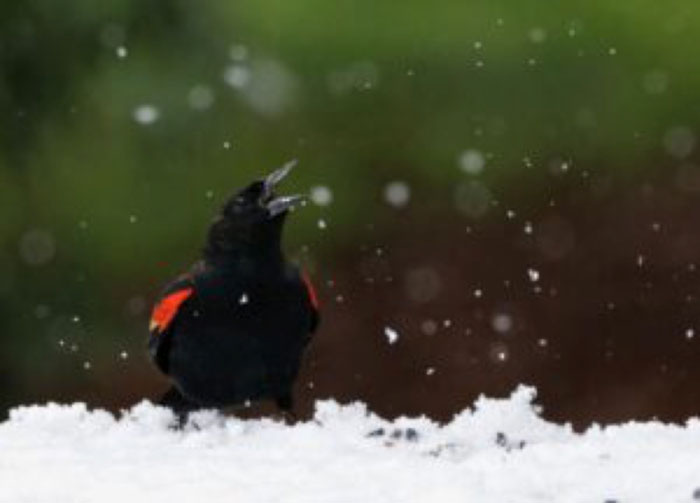 February, of course, marks real, if erratic, winter. Amazingly, some birds like Redwing Blackbirds, actually migrate to the snowy climes of Massachusetts, while others tough it out and live in the Bay State throughout its frigid winter months. February, of course, marks real, if erratic, winter. Amazingly, some birds like Redwing Blackbirds, actually migrate to the snowy climes of Massachusetts, while others tough it out and live in the Bay State throughout its frigid winter months.
Further south, the gorgeous flamingo, after decades of waiting to displace the mockingbird as Florida’s state bird, is about to be elevated since recent research reveals that the flamingo is now rebounding mightily after being hunted nearly to extinction and losing its wetland habitats that were repurposed for flood control. 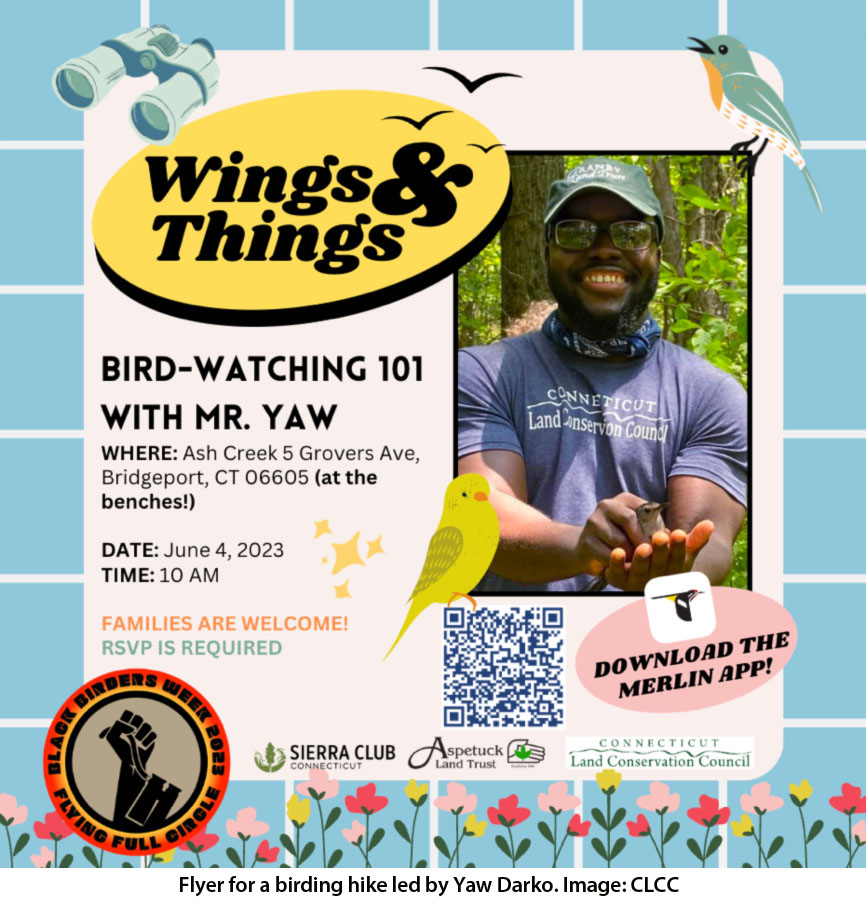 Love and enduring obstacles also mark the increase of wetland birds like Sandhill Cranes, bitterns, gallinules, rails, and other species across the Great Lakes. The reason? Rising water levels in recent years are creating more marshes and more abundant birds. Love and enduring obstacles also mark the increase of wetland birds like Sandhill Cranes, bitterns, gallinules, rails, and other species across the Great Lakes. The reason? Rising water levels in recent years are creating more marshes and more abundant birds.
And, of course, the more birds (and lovers of birds), the more ecological awareness and conservation. The Connecticut Land Conservation Trust reports in “Action and Advocacy” that new efforts to extend bird watching to more diverse audiences increase the number of Black and other minority birders, but also the number of folks in Connecticut engaged and involved in community efforts to conserve land and restore it.
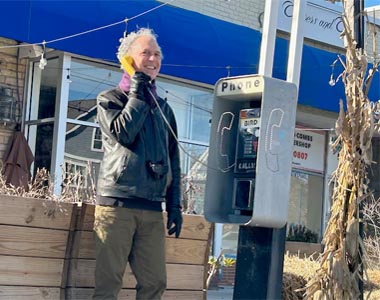 But how about the next generation? Will they love birds and birding? If the response to a free, old-fashioned pay phone in Takoma Park, Maryland is any indication, there are a lot of fledgling humans ready to fly with the birds. Hatib Joof, who installed the pay phone that only plays recorded bird songs, reports that nearby elementary school students line up several times a week to listen to the enduring sounds and songs – the gronks, tweets, hoots and hollers that keep birds alive and in love. But how about the next generation? Will they love birds and birding? If the response to a free, old-fashioned pay phone in Takoma Park, Maryland is any indication, there are a lot of fledgling humans ready to fly with the birds. Hatib Joof, who installed the pay phone that only plays recorded bird songs, reports that nearby elementary school students line up several times a week to listen to the enduring sounds and songs – the gronks, tweets, hoots and hollers that keep birds alive and in love.
As always, you’ll also find the “Best of Momentary Meditations” as author and naturalist Stephen Shick shares his birding finds and reflections in dazzling brief videos. The winner this month is his look at a pair of beautiful Northern Pintail ducks clearly in love. And, in the “Best of Bird of the Week” you’ll find February’s pick, the magnificent Golden Eagle. Not enough loving and overcoming obstacles for you? Be sure to check out this months “Books” section where you will come upon a cluster of seven books that celebrate the healing magic of birds. Then finish up with a paean to the joys of winter birding by Molly Tsongas from Oceanus that will make you want to dash outside like a Redwing Blackbird in Boston, along with our “Events” section where you can connect up with the growing numbers of diverse human beings who overcome all obstacles to love and protect the birds. | | | | | | | | 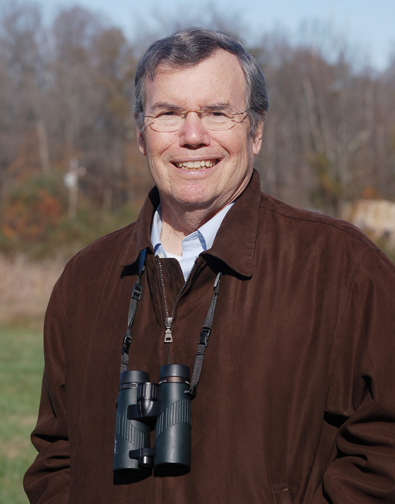 Bob Musil is the President & CEO of the Rachel Carson Council and author of Rachel Carson and Her Sisters: Extraordinary Women Who Have Shaped America’s Environment (Rutgers, 2016) and Washington in Spring: A Nature Journal for a Changing Capital (Bartleby, 2016). He is also the editor of the forthcoming annotated edition from Rutgers University Press of Rachel Carson’s Under the Sea-Wind with his Introduction, updated marine science, and historic and contemporary illustrations and photographs. Bob Musil is the President & CEO of the Rachel Carson Council and author of Rachel Carson and Her Sisters: Extraordinary Women Who Have Shaped America’s Environment (Rutgers, 2016) and Washington in Spring: A Nature Journal for a Changing Capital (Bartleby, 2016). He is also the editor of the forthcoming annotated edition from Rutgers University Press of Rachel Carson’s Under the Sea-Wind with his Introduction, updated marine science, and historic and contemporary illustrations and photographs. | | | | | | Love and Obstacles Happy that at last we had a warm weather day, my lovely wife and I went for a walk in one of our favorite destinations, Brookside Gardens. This is a world class botanical garden which we are fortunate to live close to. As we walked along the path towards nearby Pine Lake which often has a resident Belted Kingfisher plus Mallards, Hooded Mergansers and herons, we came to the gate that connects to a high fence designed to keep out deer who otherwise would dine in style on the vast and varied plants and trees. We paused momentarily as we heard people coming through from the other side and then spotted a lone Canada Goose waiting patiently by the gate. | | | | | | | | Tesla’s Pigeon: How the Great Inventor Fell For a Bird "She understood me and I understood her. I loved that pigeon.” On a February morning in 1935, a disoriented homing pigeon flew into the open window of an unoccupied room at the Hotel New Yorker. It had a band around its leg, but where it came from, or was meant to be headed, no one could say. While management debated what to do, a maid rushed to the 33rd floor and knocked at the door of the hotel’s most infamous denizen: Nikola Tesla. The 78-year-old inventor quickly volunteered to take in the homeless pigeon. | | | | | | | | Why Mister Grouse Is the Friendliest Bird in the Forest Ruffed grouse are elusive and stealthy, but scientists are seeking a genetic explanation for why some of the birds become best buddies with people. When Bill Hartline bought 50 acres of forested land outside Muncy, Pa., he was looking for a bit of solitude and a place to eventually build a new home in retirement. But during a camping trip there in early 2020, he discovered the wooded plot wasn’t as lonely as he thought. That evening, a ruffed grouse — a crow-size bird with a tiny mohawk and mottled feathers — appeared at his feet. | | | | | | | | The Flamingo May Finally Take Its Place as Florida’s State Bird Two bills — SB 918 and HB 753 — now making their way around Tallahassee propose electing the graceful wading bird to the perch. The move comes after more than a decade of research concluded flamingos, which once inhabited the state by the thousands and likely nested in parts of the Everglades and Southwest Florida, are rebounding after being hunted to extinction in wetlands that were mostly reconfigured for flood control. | | | | | | | | Why Are There So Many Birds in Massachusetts During the Winter? Bird migrations back to the northeast are already underway. While the major migration period is closer to May, certain species, like redwing blackbirds and turkey vultures, make the trek back to Massachusetts in the late winter. Some birds don’t migrate at all. Patti Steinman with Arcadia Wildlife Sanctuary outlines why some birds brave through the winter months, “It’s about food and protection. | | | | | | | | Former Audubon Group Changes Name to ‘Bird Alliance of Oregon’ Portland Audubon has changed its name to the “Bird Alliance of Oregon,” in the latest example of a local chapter to do so because of John James Audubon’s views on slavery and his desecration of Native American graves. The organization shared its decision Tuesday after soliciting community feedback in the past year on a new name, Oregon Public Broadcasting reported. | | | | | | | | | | Why Bird Conservation? “Equity, Diversity, Inclusion, and Justice (EDIJ) work is not an add-on to the work land trusts do—it’s intrinsically part of it,” notes Yaw Owusu Darko, senior project specialist at the Connecticut Land Conservation Council (CLCC), an umbrella organization for land trusts in the state. Darko believes that EDIJ efforts are an integral component of land conservation work, and being willing to move outside of your comfort zone is necessary for making progress in this area. | | | | | | | | Wintering Waterbirds Winter doldrums? Take a local birding trip to encounter a diversity of waterbirds this season. Are you looking for invigorating ways to enjoy the ocean in winter? This is the perfect season to visit your favorite beach, wetland, or coastline for viewing wintering waterbirds. Amidst glittering steely-blue waters, catch a glimpse of seabirds, shorebirds, and waterfowl. In the United States, winter birding is replete with a diversity of ducks, geese, swans, herons, ibis, cranes, grebes, flamingos, rails, pelicans, storks, kingfishers, and loons. | | | | | | | | The Year Flaco the Owl Roamed Free It started with a brazen act in the heart of Manhattan. After dusk on a frosty evening at the Central Park Zoo, someone shredded the mesh on an enclosure that was home to a Eurasian eagle-owl named Flaco. Before long, Flaco was spotted a few blocks away on Fifth Avenue. Nobody knew where this bird with fiery orange eyes had come from, and soon he was off to a tree by the Pulitzer Fountain, outside the Plaza Hotel. A tourist with wings. | | | | | | | | Wetland Bird Abundance Rises Along Great Lakes Coast Wetland bird numbers have increased across the Great Lakes region in recent years. That’s according to a study by Birds Canada, which shows bird populations flourishing along the Great Lakes coast over much of the past decade. Researchers looked at bird count data collected by the Great Lakes Coastal Wetland Monitoring Program from 2011 to 2021 at marshes located along the Great Lakes coast. | | | | | | | | 1 in 5 UN-tracked Migratory Species at Risk of Extinction A new report highlights solutions that would also address climate change. One in 5 species of migratory birds, fish, reptiles, mammals, and insects tracked by the United Nations is threatened with extinction due to escalating environmental pressures and overexploitation by humans, according to a landmark report published Monday. | | | | | | | | This Pay Phone is Free, But You Can’t Make a Call. It Only Plays Birdsongs. ‘The phone attracts a lot of attention,’ said Hatib Joof, who owns a restaurant next to the Bird Calls Phone in Takoma Park, Md. Hatib Joof sees elementary school students lined up at a pay phone outside of his restaurant in Takoma Park, Md., in suburban Washington, several times a week. “The phone attracts a lot of attention,” Joof said. “And it’s fascinating to watch people’s expressions when they use it.” | | | | | | | | Golden Eagle While the Bald Eagle gets most of the press, the Golden Eagle is equally magnificent and fierce. It also claims the title of being the most widely distributed species of eagle, living on every continent except South America and Antarctica. Golden Eagles’ agility and speed combined with powerful feet and large, sharp talons, enables them to hunt a variety of prey, including hares, rabbits, marmots and ground squirrels. Golden Eagles will even attack large mammals including coyotes and bears. | | | | | | | | Momentary Meditations are published every Monday to awaken what Rachel Carson called “the sense of wonder” and what Albert Schweitzer called “a reverence for life.” Looking deeply into our interdependence with all life on earth helps us know what we must do. In our harried world, these meditations are meant to serve as a renewable resource for compassion and love. Pintail Valentine - With its gleaming white breast and signature pointed tail, this breeding male Northern Pintail found and then followed its mate into the more private shoreline marsh. I watched this mating scene at the Edwin B. Forsythe National Wildlife Refuge in Brigantine NJ. | | | | | | | | 7 Books That Celebrate the Healing Magic of Birds Each of these authors explores the fleeting connection between humans and birds. A California Towhee bounced across the deck, its brown feathers tufted like a baby chick’s, proud and naive-looking all at once. I sat very still, fingers poised on my keyboard, silently watching, not wanting to spook it away. I knew its name—towhee—because I had recently become obsessed with birds, despite growing up in New York City and not knowing much beyond the neighborhood street pigeon. Over a year into the pandemic, my partner and I were isolated from friends, perched in our apartment in the Berkeley Hills, with only our dog and the trees and the birds for company. I latched onto the latter with an uncommon fervor. I set up a bird feeder on our deck and each day, I waited for them to come. As I worked, a brown finch (or was it a sparrow? I was still new to this game) landed its small claws on the edge of the feeder, pecking at the seed inside. Suddenly, a scurry of feathers: a larger Scrub jay swooped in, the neighborhood bully, scaring its smaller competitor off, eating messily, tossing birdfeed to the floor. Meanwhile, hawks soared menacingly, elegantly above, red tail gleaming in the sun. I was mesmerized. 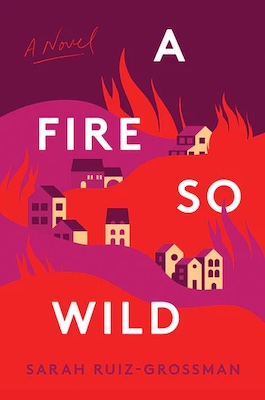 The birds calmed me when the world was in turmoil, my day job as a reporter keeping my mind hovering in grief over the pandemic, nearby wildfires, racial justice protests cracked down upon by violent cops. The birds slowed me down. And as I worked on my debut novel, they snuck their way into my book. In A Fire So Wild, a wildfire approaches Berkeley and three families are forced to reckon with the cracks in the lives they’ve built and the injustices teeming under the city’s surface. Two of the main characters—fed by my obsession—became amateur birdwatchers, high school students passionate about the climate, seeking out an elusive Spotted owl, mourning baby birds frantically leaping from their nests to escape the suffocating smoke. On the page, my bird friends became literal canaries in the coal mine of our world on fire. The birds calmed me when the world was in turmoil, my day job as a reporter keeping my mind hovering in grief over the pandemic, nearby wildfires, racial justice protests cracked down upon by violent cops. The birds slowed me down. And as I worked on my debut novel, they snuck their way into my book. In A Fire So Wild, a wildfire approaches Berkeley and three families are forced to reckon with the cracks in the lives they’ve built and the injustices teeming under the city’s surface. Two of the main characters—fed by my obsession—became amateur birdwatchers, high school students passionate about the climate, seeking out an elusive Spotted owl, mourning baby birds frantically leaping from their nests to escape the suffocating smoke. On the page, my bird friends became literal canaries in the coal mine of our world on fire.
In the seven incredible books that follow, the authors find similar refuge in the company of birds, be they clever crows who visit them daily to play, or kingfishers with regal blue crowns to whom their human observers mean nothing at all. In the birds’ elegant flight, readers can find a soaring hope for the future, and in their tweets, an urgent reminder to be present in this very moment. READ MORE | | | | | | Birding Festivals and Events A great way to enjoy bird watching is by going to festivals—they’re organized to get you to great birding spots at a great time of year, and they’re a great way to meet people. Experts and locals help you see more birds, and you’ll meet other visitors who share your hobby. While you’re there, keep an eye out for Cornell Lab representatives, as we do attend several festivals each year. | | | | | | | | Maryland's Top Birding Events Maryland welcomes wildlife watchers and photographers from across the U.S. and around the globe to experience world-class birding in a variety of easily-accessible habitats. From our Western Maryland mountains to the Chesapeake Bay to our Atlantic barrier islands, more than 450 species of birds have been documented in the state (check out this impressive statewide species tally from our friends at the Maryland Biodiversity Project). | | | | | | | | The February 2024 issue of Bird Watch and Wonder was produced by Ross Feldner | | | | | |  The Rachel Carson Council Depends on Tax-deductible Gifts From Concerned Individuals Like You. Please Help If You can. The Rachel Carson Council Depends on Tax-deductible Gifts From Concerned Individuals Like You. Please Help If You can. | | | |  Sign Up Here to Receive the RCC E-News and Other RCC Newsletters, Information and Alerts. Sign Up Here to Receive the RCC E-News and Other RCC Newsletters, Information and Alerts. | | | | | | | | | | | |